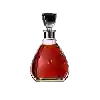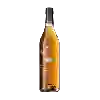
Winery Terres des TempliersRimatge Banyuls
This wine generally goes well with beef and mature and hard cheese.
The Rimatge Banyuls of the Winery Terres des Templiers is in the top 50 of wines of Banyuls.
Wine flavors and olphactive analysis
Food and wine pairings with Rimatge Banyuls
Pairings that work perfectly with Rimatge Banyuls
Original food and wine pairings with Rimatge Banyuls
The Rimatge Banyuls of Winery Terres des Templiers matches generally quite well with dishes of beef or mature and hard cheese such as recipes of beef bourguignon with tomato or titgazelle's herring and leek pie.
Details and technical informations about Winery Terres des Templiers's Rimatge Banyuls.
Discover the grape variety: Panse muscade
Panse muscade is a grape variety that originated in France (Provence). It produces a variety of grape specially used for wine making. It is rare to find this grape to eat on our tables. We find the Panse muscade white in the vineyards of Provence and Corsica.
Last vintages of this wine
The best vintages of Rimatge Banyuls from Winery Terres des Templiers are 2007
Informations about the Winery Terres des Templiers
The Winery Terres des Templiers is one of of the world's great estates. It offers 98 wines for sale in the of Banyuls to come and discover on site or to buy online.
The wine region of Banyuls
Banyuls wines come from the South-eastern Part of Roussillon, in the south of France, in the lower Pyrenees, a few kilometres from the Spanish border. These naturally Sweet wines are consumed both as an aperitif and as a dessert. They come in a wide range of hues, from GoldenGreen (Banyuls Blanc) to Amber (Banyuls Ambré) to the intense garnet of the standard Banyuls Rouge. Unusually among the natural sweet wines of France, all Banyuls wines are made primarily from Grenache grapes of various colors.
The wine region of Languedoc-Roussillon
Languedoc (formerly Coteaux du Languedoc) is a key appellation used in the Languedoc-Roussillon wine region of southern France. It covers Dry table wines of all three colors (red, white and rosé) from the entire region, but leaves Sweet and Sparkling wines to other more specialized appellations. About 75% of all Languedoc wines are red, with the remaining 25% split roughly down the middle between whites and rosés. The appellation covers most of the Languedoc region and almost a third of all the vineyards in France.
The word of the wine: Perlant
Said of a slightly effervescent wine.













